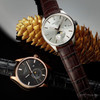

Expert advice: How to choose the right entry-level watch? (Part 1)
There are a few key points you should definitely consider before buying a watch. If you take these aspects into account when making your selection, you can't go wrong. However, if you still desire a "quality" watch from a "handier" manufacturer, don't read any further, really. I buy quality meat from the butcher, I go to the hairdresser to get my hair cut, and I buy watches from the watchmaker. Do you understand what I'm getting at?
In this article, I would like to focus on the "entry level" of the world of high-quality watchmaking. The key features that every good watch should have if you have decided to invest between €300 and €1,000. So let's take a look at the basic functions.
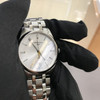
1. Sapphire watch glass
The crystal is the transparent part of the watch that protects the dial from damage. Over time, as the entire industry has evolved, various materials have been sought that are hard enough but also durable enough to withstand normal and even rough handling. There is nothing worse than scratched glass, as it diminishes the value of the watch and the pleasure of wearing it. The only material that almost perfectly meets all these attributes is sapphire. Sapphire is extremely durable and, in the vast majority of cases, immune to everyday use. I have often been amazed in the store when a customer brought in a 15-20-year-old watch for service without a SINGLE scratch on the glass, despite the obviously "beaten up" case and bezel.
For me personally, the choice of glass is one of the key features of my future watches. For example, Tissot offers the cheapest model with sapphire glass for only €175! For €300–400, you have a huge selection, even with a stopwatch, and for €1,000, you can get a watch with an automatic movement. The vast majority of Chinese fashion brands offer mineral glass, one of the most commonly used types precisely because of its price, but certainly not because of its properties. Mineral glass is easier to scratch. I really don't see any objective and rational reason to spend €300 on a watch where the manufacturer doesn't use sapphire glass at all. They certainly could, it's possible, but it would be more expensive and the profits would be smaller.
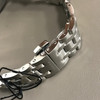
2. Material
A high-quality watch should be made of high-quality steel. The most commonly used steel across the entire watchmaking spectrum—excluding fashion brands—is 316L. It has the best corrosion resistance properties and is relatively easy to work with. You would be surprised at the materials that pseudo-watch manufacturers use. 316L steel is the absolute standard for all Tissot and Certina models and higher-end brands. When choosing your next watch, be sure to check the material the case is made of. There is only one right choice.
I would also like to point out that there are people who are allergic to metal. Even 316L steel, although highly hypoallergenic, contains a small amount of nickel, which can cause an allergic reaction in the wearer. In this case, I recommend titanium, which is about 40% lighter and completely hypoallergenic, but of course more expensive.
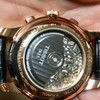
3. Movement
If you are wondering how to choose the right watch, be sure to pay attention to the movement. However, I am not referring to quartz or mechanical movements, but rather the country of origin. For me, the answer is clear – Switzerland. Of course, we mustn't forget Japanese movements, which are said to be just as good and, in some cases, even better. However, at WATCH DE LUXE, we specialize in watches from the country of the Swiss cross. The Swiss have a very long tradition of manufacturing calibers (i.e., movements), and manufacturers such as ETA and SELLITA are guarantors of quality with vast experience. ETA, in particular, has been manufacturing movements since 1793, which I think is sufficient proof of their competence. Let me give you another example. This company supplies movements for watches costing €200 as well as €5,000.
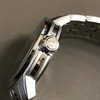
4. Solid feel
In this section, I will continue and build on the material I wrote about in the second point. Although it is necessary to choose a watch based on the above parameters, one should not forget the emotional factor. How it feels when you hold it in your hand. Just compare, for example, two models from two different brands. The first will be a classic Swiss watch with a long tradition, and the second will be from a trouser manufacturer. I should point out that I am referring to the same price category – around $300 to $350. In my opinion, the difference is striking, and it is best seen in the workmanship of the case and bracelet. The quality of the workmanship is clearly visible.
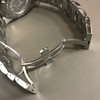
5. Bracelet clasp
The bracelet clasp is another indicator of quality. A good watch should have a sophisticated clasp; more expensive models use significantly thicker and more durable materials and are equipped with a safety clasp to prevent accidental opening. Other brands use a primitive metal mechanism where the two sides simply snap together. Pay attention to this feature, as it is the details that will tell the future owner whether the manufacturer really intended to make a watch that will last 20-30 years, or just one season.
You will learn more interesting information soon in the continuation of this article. In the meantime, you can get inspired and find your dream watch.
Watches Tissot under 1000 eur.
Watches Certina under 1000 eur
Watches Longines under 1000 eur
Watches TAG Heuer under 1000 eur
Introduction
My name is Martin Demko and I have been working with watches since 2011. During that time, I have handled many models, both cheap and expensive, from renowned brands and lesser-known ones. My work is both a pleasure and a hobby for me. What I have always strived for and continue to strive for is maximum honesty towards customers, even at the expense of business. I have completed numerous courses and a considerable amount of training in Switzerland. If you like my articles and my subjective view on various issues, or if you disagree, feel free to write to me at m.demko@racio.com. I would really appreciate any feedback.



